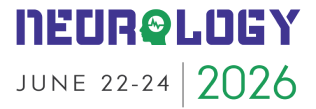Title : The detrimental effect of light on dopaminergic neurons: Implications for PD onset
Abstract:
Parkinson's disease (PD) stands out as one of the most prevalent neurodegenerative conditions, typically manifesting in later stages of life, characterized by the gradual deterioration of motor functions. Recently identified environmental factors either increase the risk or display an inverse relationship with the PD development; exposure to certain pesticides, for example, has been linked to an increased PD risk. Although light pollution hasn't been considered a potential risk factor for PD, it is an escalating concern due to its impact on human health. Research has provided evidence that prolonged exposure to bright light, emitted by common fluorescent lamps, can significantly reduce dopaminergic neurons in the substantia nigra of rats and mice. This effect appears to be specific to dopaminergic neurons. Our studies have demonstrated that light wavelengths above 600 nm can penetrate the scalp and skull of rodents, reaching the substantia nigra, suggesting a direct detrimental effect of fluorescent light on dopaminergic neurons, rather than an indirect impact related to circadian rhythm disruption. It has also been shown that light can penetrate deep into the human brain after traversing the scalp and skull. Incandescent bulbs and white LED lights feature a continuous light spectrum, whereas fluorescent white light's electromagnetic spectrum includes wavelength peaks in the blue, green, and red range, collectively producing white light. This allows for the dissection of various components of white light for further evaluation. Through the use of monochromatic LEDs, we replicated specific peaks of fluorescent white light and examined their detrimental effects on immortalized dopaminergic MN9D cell lines and dopaminergic neuronal cultures derived from human induced pluripotent stem cells (hiPSCs). Our findings indicate that LEDs with wavelengths shorter than 710 nm are harmful to dopaminergic neurons, with the peak at 610 nm causing the most damage; the 610 nm wavelength can penetrate the mouse brain to a greater extent. These observations suggest that the specific peaks at 610 nm may be responsible for the detrimental effects observed with in vivo exposure to fluorescent white light.
Audience Take Away Notes:
- This study supports the notion that the damage on dopaminergic neurons exposed to fluorescent light is most likely caused by the 610 nm wavelength.
- Our findings indicate that the cellular models employed in our study can reliably predict the effects observed in vivo when dopaminergic cells are exposed to the same injury and encourage further investigation in vivo using LED light at 610 nm.
- This in vitro system could be crucial to investigate the effects of specific gene mutations of susceptibility to PD disease.
- The study could establish a new chronic rodent model of PD, drug-free and ideally stress-free.
- These results prompt the exploration of light pollution as a potential environmental risk factor for PD in epidemiological analysis.




